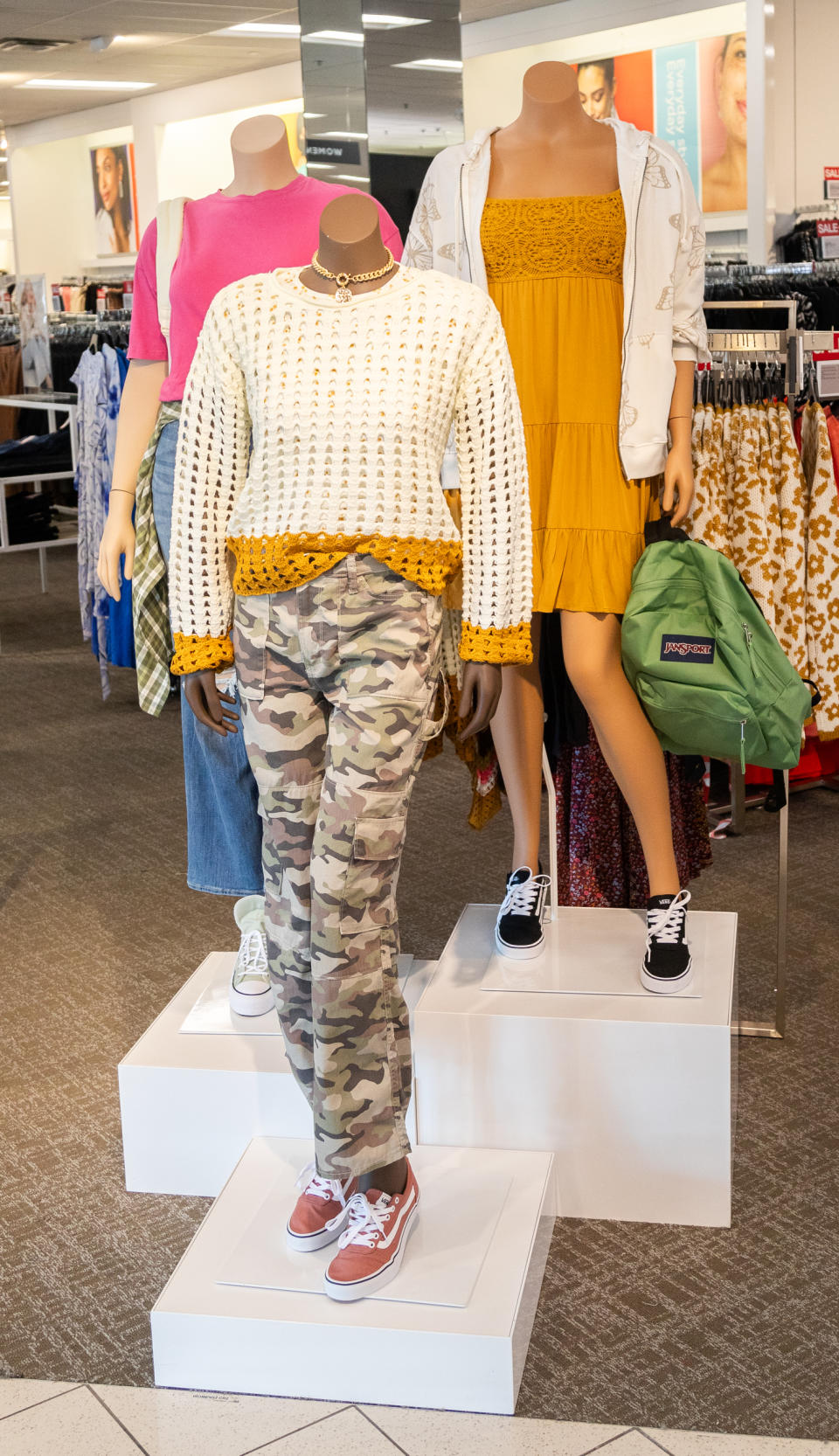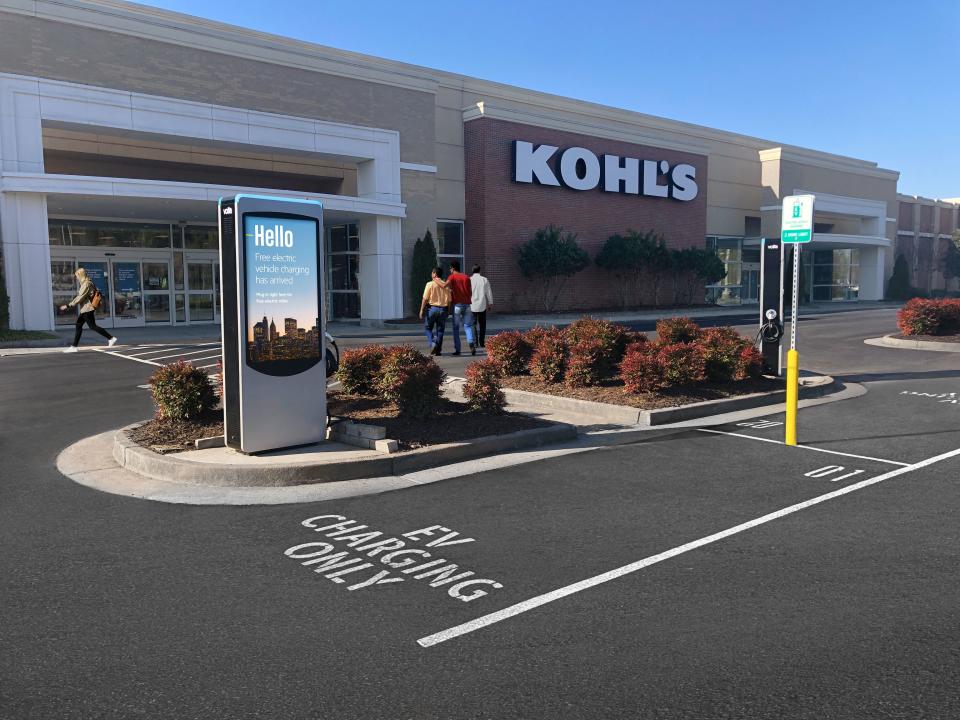Kohl’s Sees Steep Q2 Declines but Reassures Wall Street

Story was updated Aug. 23 at 4:16 p.m.
Kohl’s Corp., faced with softening consumer demand, saw steep declines in both the top and bottom lines during the second quarter, but the results fell in line with the retailer’s expectations.
More from WWD
Net income for the period ended July 29 was $58 million, or $0.52 per diluted share. This compares to net income of $143 million, or $1.11 per diluted share in the prior year.
Operating income was $163 million compared to $266 million in the prior year. As a percentage of total revenue, operating income was 4.2 percent, a decrease of 233 basis points year-over-year.
Net sales decreased 4.8 percent to $3.7 billion, from $3.86 billion in the year-ago period. Comparable sales were down 5 percent.
“I would think that in 2024, we could potentially get back to positives. That’s obviously our objective overall,” chairman and chief executive officer Tom Kingsbury told analysts in response to a question during Wednesday’s conference call.

Aside from exceeding expectations, Kingsbury did spell out a battery of strategies to lift the performance of the business, which combined apparently went over reasonably well with Wall Street. By the closing bell Wednesday, Kohl’s stock was up 5 percent, or $1.30, to $27.03
Among the strategies outlined by Kingsbury: “Accelerating and simplifying our value strategies, eliminating online-only offers in favor of a more targeted offers and clearing slower selling goods on a more regular basis,” Kingsbury said.
He said the pricing was moving to an omnichannel approach that’s more simplified for the customer. “To have two different pricing strategies just wasn’t good.”
Kohl’s has been consistently among the most promotional of retailers offering strong values, and maintaining a one-stop-shop family appeal, though apparently the messaging got confused across channels. At the start of the back-to-school season, Kohl’s executives told WWD the store would be offering more ways for customers to save money, and that it simplified its value messaging so shoppers can readily understand the deals being offered. The marketing has also been emphasizing versatility, meaning how key back-to-school fashion items can be outfitted in different ways and worn for different occasions. Strong values have been offered in T-shirts, denim, sneakers, backpacks and utility cargo bottoms.
“The macro environment continues to be challenging for our customers,” Kingsbury said. “That’s a reason why we’re really focused on delivering as much value as possible because obviously customers have less money to spend.”
On the merchandise front, Kingsbury told analysts that the company is testing more key value items, and for holiday 2023 bringing in additional home decor product, and prioritizing gifts by positioning the category in the front of stores. Also for holiday, Kohl’s is putting together an expanded offering of what it characterizes as “impulse” offerings including select items in beauty, wellness, toys, snacks and other areas.
Kingsbury said that Kohl’s chief merchandising officer Nick Jones has been in New York “pretty much every week now looking at a lot of brands” that could be added to the assortment. “We haven’t made any real decisions yet,” Kingsbury said. “We can have more prints, more color in the assortments.…We are looking at the young women’s business. We really feel that could be an opportunity for us.”

Over the past few years, the Menomonee Falls, Wisconsin-based retailer has grown its assortment of high-profile national brands. Among Kohl’s top performers last quarter were Nike, Under Armour, Hagar, Izod, Hurley and Eddie Bauer. Top-performing private brands were Apartment Nine, LC Lauren Conrad and Jumping Beans. Accessories was the best-performing category.
Kohl’s isn’t the only big retailer confronting waning consumer demand. Key competitors to Kohl’s, including Macy’s and Target, also reported second-quarter top-line declines, though Walmart, abetted by its strong grocery offerings, posted gains.
He said that the catalyst for holiday 2023 is “really maximizing the gift business. We did some of that last year by moving the product to the front of the store and it did very well. We’re going to be doing it again this year and making a major statement. In the front, we have some extra square footage because we removed [certain] register bays.”
During the second quarter, Kingsbury said the company reduced inventory by 14 percent compared to last year “exceeding our goal of planning inventory down mid-single digits. We operated with greater open-to-buy, which allowed us to stay agile as the demand environment evolved in the second quarter. As we implement new planning and allocation processes, we are becoming more responsive to the customer’s demand, operating with additional open-to-buy to chase trends and minimize risk.
“Looking to the fall season, we feel good about our current inventory levels and in our ability to continue to manage inventory with discipline.…We are continuing to proactively capitalize on opportunities to drive efficiency across all areas of the company.” That includes bringing down some marketing spend while investing in technology to improve productivity, such as self-checkout kiosks in stores and a higher level of automation to more efficiently flow goods in e-commerce fulfillment centers.
He also said the company will resume store openings, but didn’t specify how many. “We’re really just begun the analysis. And obviously, in later earnings calls, we’ll share more. One thing we know we’re going to do is open smaller stores, the biggest going forward being 55,000 square feet, while we’ll be adding probably a lot at 35,000 square feet.”

In his prepared statement, Kingsbury said, “Our second-quarter earnings were in line with our expectations. We maintained strong sales momentum in Sephora at Kohl’s, reduced inventory by 14 percent, and managed expenses tightly. Further, solid cash flow generation allowed us to reduce our borrowings in the period.” Kohl’s ended the quarter with $204 million of cash and cash equivalents and expects to “drive strong positive cash flow generation in the third and fourth quarters,” Kingsbury said. In recent past quarters, Kohl’s cash flow was a concern which now seems to be easing.
Kingsbury said August-to-date sales are off to a good start, and in his statement said, “Many of our strategic efforts are just underway, which we expect will contribute incrementally in the back half of the year, and even more so in 2024 and beyond. We have enhanced the store experience and recently opened an additional 200 Sephora at Kohl’s shops, and are taking steps to further optimize our assortment and simplify our value strategies. Looking ahead, we are reaffirming our 2023 guidance and remain confident in our longer-term opportunity.
Widespread through the retail industry is the growing shrink problem caused by organized crime gangs ransacking stores or through internal issues. Kingsbury said shrink “continues to remain a headwind in the second half. But we’ve put a lot of efforts in place to prioritize the safety of our associates and our customers, cabling products and fixtures, going to just testers in beauty, and we have more attendants in the fitting rooms, and more presence in the front of store. So we’re doing everything we can to mitigate shrinks.”
“Kohl’s reported a somewhat reassuring [second-quarter] report in an increasingly volatile discretionary retail climate,” David Silverman, senior director, Fitch Ratings, wrote in a research report. “While revenue was down 5 percent given spending pullbacks in Kohl’s key categories and ongoing mis-execution, the company was able to rein in inventory, produce positive cash flow in the quarter, and maintain its earnings guidance for the full year. Fitch expects the company to demonstrate improving profitability and cash flow as the year progresses despite top-line headwinds, given efforts to reduce inventory and pull back discretionary expenses.”
In other financial results for the quarter at Kohl’s, inventory was $3.5 billion, a decrease of 14 percent year-over-year. Gross margin as a percentage of net sales was 39 percent, a decrease of 61 basis points.
For the year, Kohl’s is projecting a 2 to 4 percent decrease in net sales, including the impact of the 53rd week, which is worth about 1 percent year-over-year. Operating margin is seen at about 4 percent.
Diluted earnings per share are projected in the range of $2.10 to $2.70, excluding any non-recurring charges. Capital expenditures are seen at between $600 million to $650 million, including expansion of the Sephora partnership and store refresh activity.
Best of WWD

